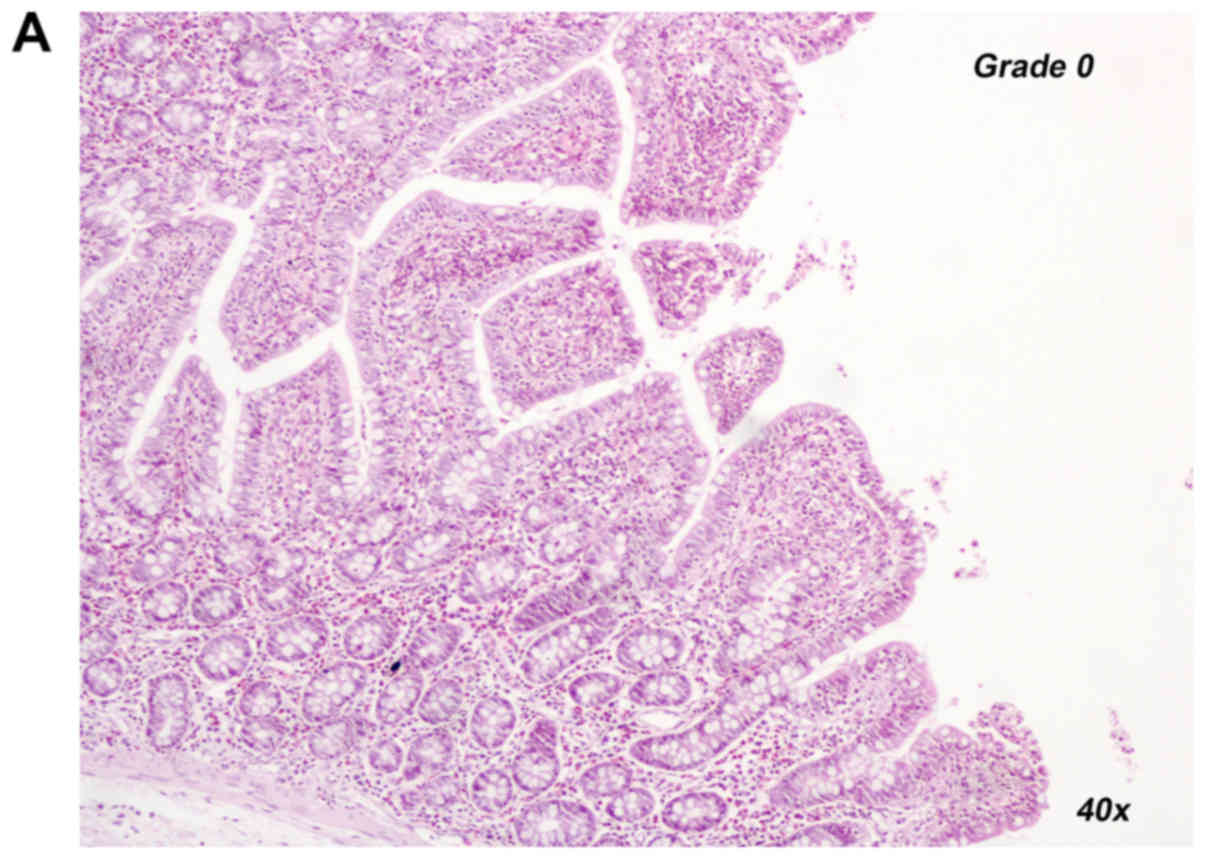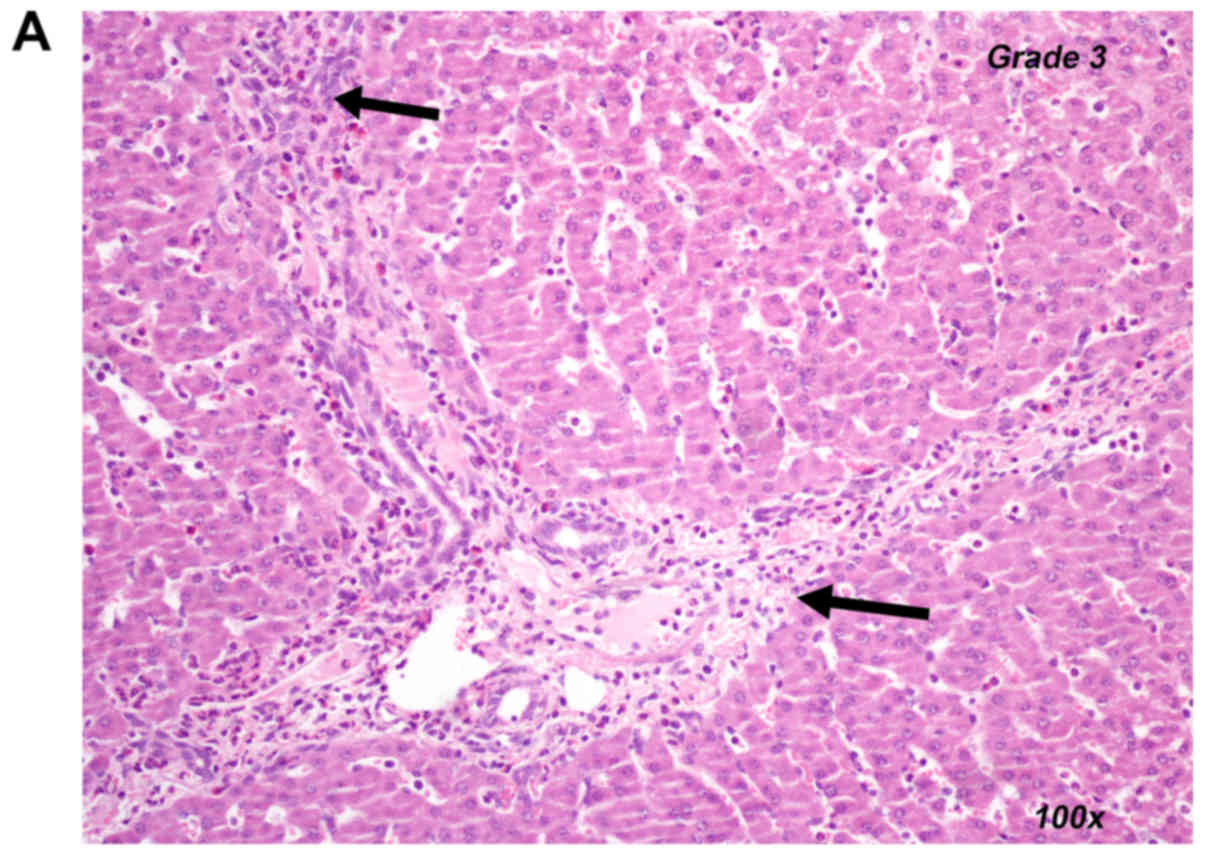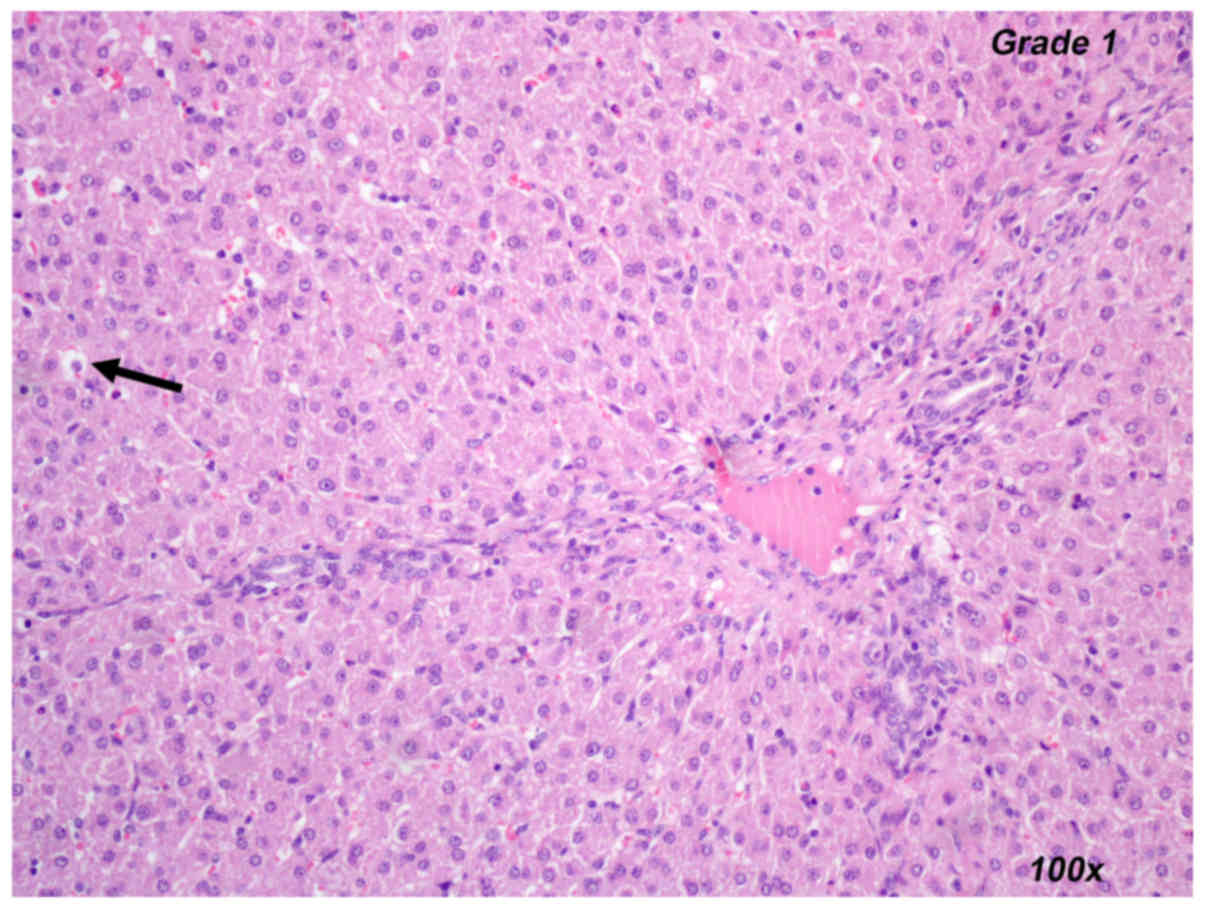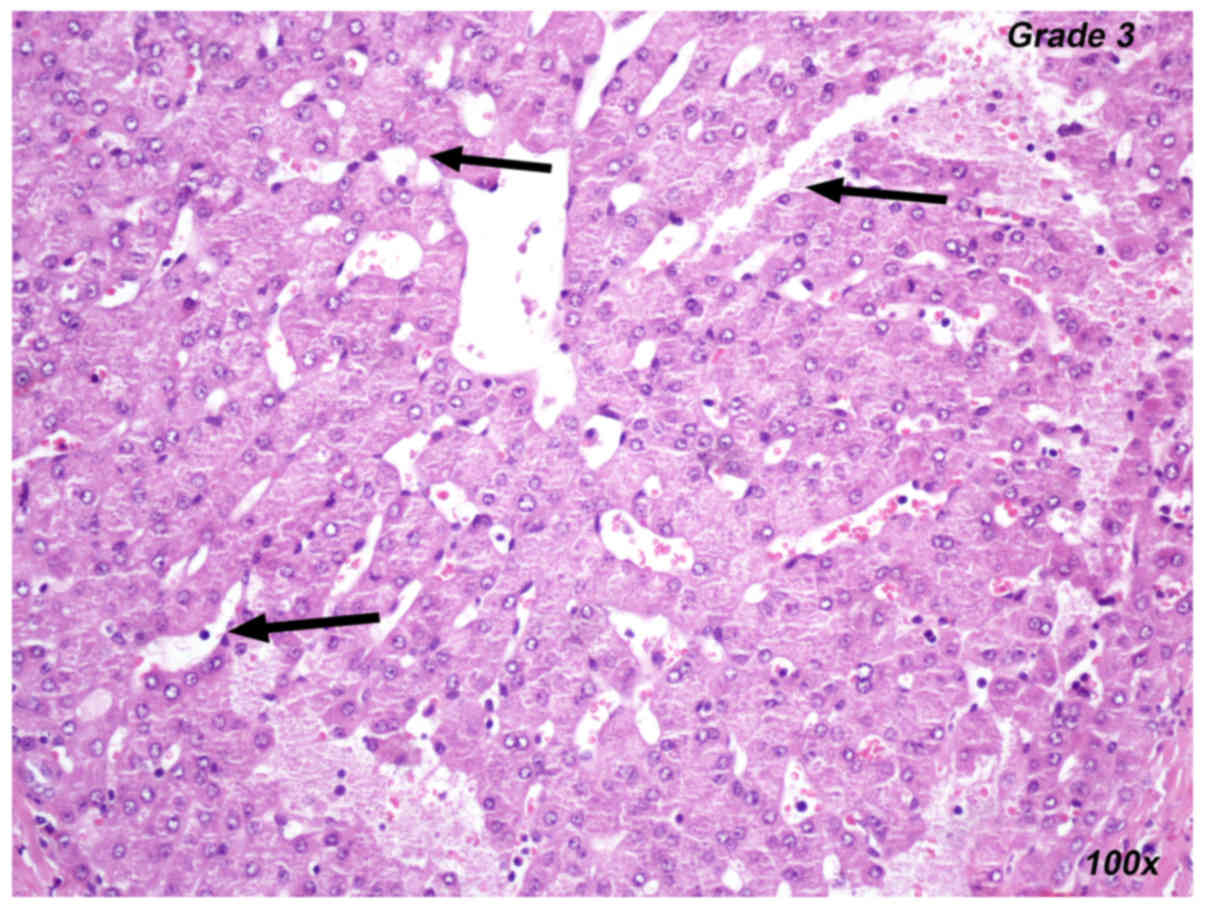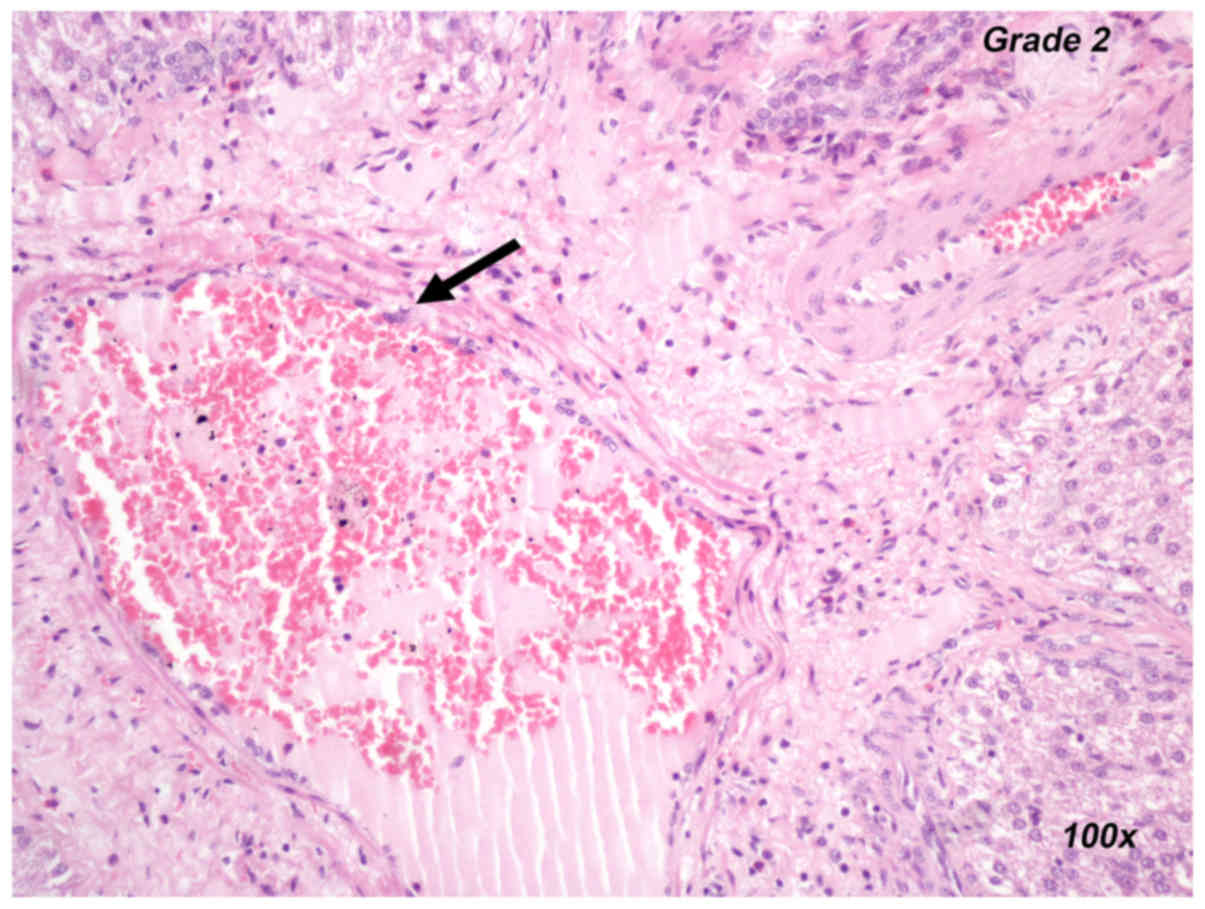|
1
|
Hillinger S, Schmid RA, Stammberger U,
Boehler A, Schöb OM, Zollinger A and Weder W: Donor and recipient
treatment with the Lazaroid U-74006F do not improve post-transplant
lung function in swine. Eur J Cardiothorac Surg. 15:475–480. 1999.
View Article : Google Scholar : PubMed/NCBI
|
|
2
|
Shackleton CR, Ettinger SL, Scudamore CH,
Toleikis PF and Keown PA: Effect of a 21-aminosteroid, U74006F, on
lipid peroxidation and glomerulotubular function following
experimental renal ischemia. J Surg Res. 57:433–437. 1994.
View Article : Google Scholar : PubMed/NCBI
|
|
3
|
Haynes J Jr, Seibert A, Bass JB and Taylor
AE: U74500A inhibition of oxidant-mediated lung injury. Am J
Physiol. 259:H144–H148. 1990.PubMed/NCBI
|
|
4
|
Katz SM, Sun S, Schechner RS, Tellis VA,
Alt ER and Greenstein SM: Improved small intestinal preservation
after lazaroid U74389G treatment and cold storage in University of
Wisconsin solution. Transplantation. 59:694–698. 1995. View Article : Google Scholar : PubMed/NCBI
|
|
5
|
Flessas II, Papalois AE, Toutouzas K,
Zagouri F and Zografos GC: Effects of lazaroids on intestinal
ischemia and reperfusion injury in experimental models. J Surg Res.
166:265–274. 2011. View Article : Google Scholar : PubMed/NCBI
|
|
6
|
Fukuma K, Marubayashi S, Okada K, Yamada
K, Kimura A and Dohi K: Effect of lazaroid U-74389G and
methylprednisolone on endotoxin-induced shock in mice. Surgery.
125:421–430. 1999. View Article : Google Scholar : PubMed/NCBI
|
|
7
|
Braughler JM, Chase RL, Neff GL, Yonkers
PA, Day JS, Hall ED, Sethy VH and Lahti RA: A new 21-aminosteroid
antioxidant lacking glucocorticoid activity stimulates
adrenocorticotropin secretion and blocks arachidonic acid release
from mouse pituitary tumor (AtT-20) cells. J Pharmacol Exp Ther.
244:423–427. 1988.PubMed/NCBI
|
|
8
|
Currin RT, Reinstein LJ, Lichtman SN,
Thurman RG and Lemasters JJ: Inhibition of tumor necrosis factor
release from cultured rat Kupffer cells by agents that reduce graft
failure from storage injury. Transplant Proc. 25:1631–1632.
1993.PubMed/NCBI
|
|
9
|
Shenkar R and Abraham E: Effects of
treatment with the 21-aminosteroid, U7438F, on pulmonary cytokine
expression following hemorrhage and resuscitation. Crit Care Med.
23:132–139. 1995. View Article : Google Scholar : PubMed/NCBI
|
|
10
|
Ishizaki N, Zhu Y, Zhang S, Nemoto A,
Kobayashi Y, Subbotin VM, Lee RG, Starzl TE and Todo S: Comparison
of various lazaroid compounds for protection against ischemic liver
injury. Transplant Proc. 29:1333–1334. 1997. View Article : Google Scholar : PubMed/NCBI
|
|
11
|
Kalra J, Mantha SV, Kumar P and Prasad K:
Protective effects of lazaroids against oxygen-free radicals
induced lysosomal damage. Mol Cell Biochem. 136:125–129. 1994.
View Article : Google Scholar : PubMed/NCBI
|
|
12
|
Garvin PJ, Niehoff ML, Robinson SM, Mistry
B, Esterl R, Heisler T, Combs C, Berson A, Solomon H and
Salinas-Madrigal L: Renoprotective effects of the 21-aminosteroid
U74389G in ischemia-reperfusion injury and cold storage
preservation. Transplantation. 63:194–201. 1997. View Article : Google Scholar : PubMed/NCBI
|
|
13
|
Chrysikos DT, Sergentanis TN, Zagouri F,
Psaltopoulou T, Theodoropoulos G, Flessas I, Agrogiannis G,
Alexakis N, Lymperi M, Katsarou AI, et al: Lazaroid U-74389G
administration in pancreatic ischemia-reperfusion injury: a swine
model encompassing ischemic preconditioning. JOP. 16:176–184.
2015.PubMed/NCBI
|
|
14
|
Chrysikos DT, Sergentanis TN, Zagouri F,
Psaltopoulou T, Flessas I, Agrogiannis G, Alexakis N, Bramis I,
Patsouri EE, Patsouris ES, et al: The effect of U-74389G on
pancreas ischemia-reperfusion injury in a swine model. J Surg Res.
187:450–457. 2014. View Article : Google Scholar : PubMed/NCBI
|
|
15
|
Andreadou I, Poussios D, Papalois A,
Gavalakis N, Aroni K, Gazouli M, Gorgoulis VG and Fotiadis C:
Effect of U-74389G (21-lazaroid) on intestinal recovery after acute
mesenteric ischemia and reperfusion in rats. In Vivo. 17:463–468.
2003.PubMed/NCBI
|
|
16
|
Takahashi T, Takeyoshi I, Hasegawa Y,
Koyano T, Yamagishi T, Oshima K, Matsumoto K and Morishita Y:
Cardioprotective effects of Lazaroid U-74389G on
ischemia-reperfusion injury in canine hearts. J Heart Lung
Transplant. 18:285–291. 1999. View Article : Google Scholar : PubMed/NCBI
|
|
17
|
Todo S, Hamada N, Zhu Y, Zhang S, Subbotin
V, Nemoto A, Takeyoshi I and Starzl TE: Lazaroid U-74389G for
48-hour canine liver preservation. Transplantation. 61:189–194.
1996. View Article : Google Scholar : PubMed/NCBI
|
|
18
|
Tsaroucha AK, Papalois A, Vernadakis S,
Adamopoulos S, Papadopoulos K, Lambropoulou M, Constadinidis T,
Kyriazi A, Papadopoulos N and Simopoulos C: The effect of U-74389G
on liver recovery after acute liver ischemia-reperfusion injury in
a swine model. J Surg Res. 151:10–14. 2009. View Article : Google Scholar : PubMed/NCBI
|
|
19
|
Kawarski M, Hagerman TK and Karver CE:
Lazaroids U83836E and U74389G are potent, time-dependent inhibitors
of caspase-1. Chem Biol Drug Des. 86:1049–1054. 2015. View Article : Google Scholar : PubMed/NCBI
|
|
20
|
Wu B, Fujise T, Iwakiri R, Ootani A,
Amemori S, Tsunada S, Toda S and Fujimoto K: Venous congestion
induces mucosal apoptosis via tumor necrosis factor-alpha-mediated
cell death in the rat small intestine. J Gastroenterol.
39:1056–1062. 2004. View Article : Google Scholar : PubMed/NCBI
|
|
21
|
Kilkenny C, Browne WJ, Cuthill IC, Emerson
M and Altman DG: Improving bioscience research reporting: The
ARRIVE guidelines for reporting animal research. PLoS Biol.
8:e10004122010. View Article : Google Scholar : PubMed/NCBI
|
|
22
|
Karamtsoukis SL, Trigka EA, Stasinopoulou
M, Stavridou A, Zacharioudaki A, Tsarea K, Karamperi M, Pittaras T,
Papadopoulos O, Patsouris E, et al: Beneficial effect of U-74389G
and Sildenafil in an experimental model of flap Iscemia/Reperfusion
Injury is swine. Histological and Biochemical evaluation of the
model. J Invest Surg. Nov 30–2018.(Epub ahead of print). View Article : Google Scholar
|
|
23
|
Bouboulis G, Bonatsos VG, Katsarou AI,
Karameris A, Galanos A, Zacharioudaki A, Theodoropoulos G, Zografos
G, Papalois AE and Toutouzas K: Experimental hemorrhagic shock
protocol in swine models: The effects of 21-Aminosteroid on the
small intestine. Curr Ther Res Clin Exp. 88:18–25. 2018. View Article : Google Scholar : PubMed/NCBI
|
|
24
|
Swindle MM and Smith AC: Swine in the
laboratory: surgery, anesthesia, imaging and experimental
techniques, Third Edition. CRC Press. (Boca Raton, FL). pp58–59,
81. 2015.
|
|
25
|
Orfanos NF, Mylonas AI, Karmaniolou II,
Stergiou IP, Lolis ED, Dimas C, Papalois AE, Kondi-Pafiti AI,
Smyrniotis VE and Arkadopoulos NF: The effects of antioxidants on a
porcine model of liver hemorrhage. J Trauma Acute Care Surg.
80:964–971. 2016. View Article : Google Scholar : PubMed/NCBI
|
|
26
|
Mylonas AI, Orfanos NF, Karmaniolou II,
Lolis ED, Stergiou EP, Papalois AE, Nomikos TN, Kondi-Pafiti AI,
Smyrniotis VE and Arkadopoulos NF: The effects of hemorrhagic shock
secondary to hepatectomy in a swine model. J Surg Res. 195:228–234.
2015. View Article : Google Scholar : PubMed/NCBI
|
|
27
|
Hafez T, Moussa M, Nesim I, Baligh N,
Davidson B and Abdul-Hadi A: The effect of intraportal
prostaglandin E1 on adhesion molecule expression, inflammatory
modulator function, and histology in canine hepatic
ischemia/reperfusion injury. J Surg Res. 138:88–99. 2007.
View Article : Google Scholar : PubMed/NCBI
|
|
28
|
Chiu CJ, McArdle AH, Brown R, Scott HJ and
Gurd FN: Intestinal mucosal lesion in low-flow states. I. A
morphological, hemodynamic, and metabolic reappraisal. Arch Surg.
101:478–483. 1970. View Article : Google Scholar : PubMed/NCBI
|
|
29
|
Nastos C, Kalimeris K, Papoutsidakis N,
Tasoulis MK, Lykoudis P, Theodoraki K, Nastou D, Smyrniotis V and
Arkadopoulos N: Global consequences of liver Ischemia/reperfusion
injury. Oxid Med Cell Longev. 2014:9069652014. View Article : Google Scholar : PubMed/NCBI
|
|
30
|
Margonis N, Christoloukas N, Antoniou E,
Arkadopoulos N, Theodoropoulos G, Agrogiannis G, Pikoulis E,
Patsouris ES, Zografos GC and Papalois AE: Effectiveness of
sildenafil and U-74389G in a rat model of colitis. J Surg Res.
193:667–674. 2014. View Article : Google Scholar : PubMed/NCBI
|
|
31
|
de Oca J, Cuadrado S, Vallet J, Benasco C,
Martín E, Ardanuy C, Closa D, Hotter G and Jaurrieta E: Protective
effects of lazaroid U74389G on intestinal graft after heterotopic
small bowel transplantation in rats. J Surg Res. 75:18–23. 1998.
View Article : Google Scholar : PubMed/NCBI
|
|
32
|
Chen H, Xu D, Qi S, Aboujaoude M, Sénéchal
J and Daloze P: 21-Aminosteroid lipid peroxidation inhibitor
U74389G protects the small bowel in the rat against warm and cold
ischemia damage. Transplant Proc. 26:1483–1484. 1994.PubMed/NCBI
|
|
33
|
Flessas I, Bramis I, Menenakos E,
Toutouzas K, Agrogiannis G, Patsouris E, Nonni A, Chrysikos D,
Korontzi M, Gioxari A, et al: Effects of lazaroid U-74389G on
intestinal ischemia and reperfusion injury in porcine experimental
model. Int J Surg. 13:42–48. 2015. View Article : Google Scholar : PubMed/NCBI
|
|
34
|
Niederau C, Schulz HU and Klonowski H:
Lazaroids protect isolated rat pancreatic acinar cells against
damage induced by free radicals. Pancreas. 11:107–121. 1995.
View Article : Google Scholar : PubMed/NCBI
|
|
35
|
Collard CD and Gelman S: Pathophysiology,
clinical manifestations, and prevention of ischemia-reperfusion
injury. Anesthesiology. 94:1133–1138. 2001. View Article : Google Scholar : PubMed/NCBI
|
|
36
|
Squadrito F, Altavilla D, Ammendolia L,
Squadrito G, Campo GM, Sperandeo A, Canale P, Ioculano M, Saitta A
and Caputi AP: Improved survival and reversal of endothelial
dysfunction by the 21-aminosteroid, U-74389G in splanchnic
ischaemia-reperfusion injury in the rat. Br J Pharmacol.
115:395–400. 1995. View Article : Google Scholar : PubMed/NCBI
|















